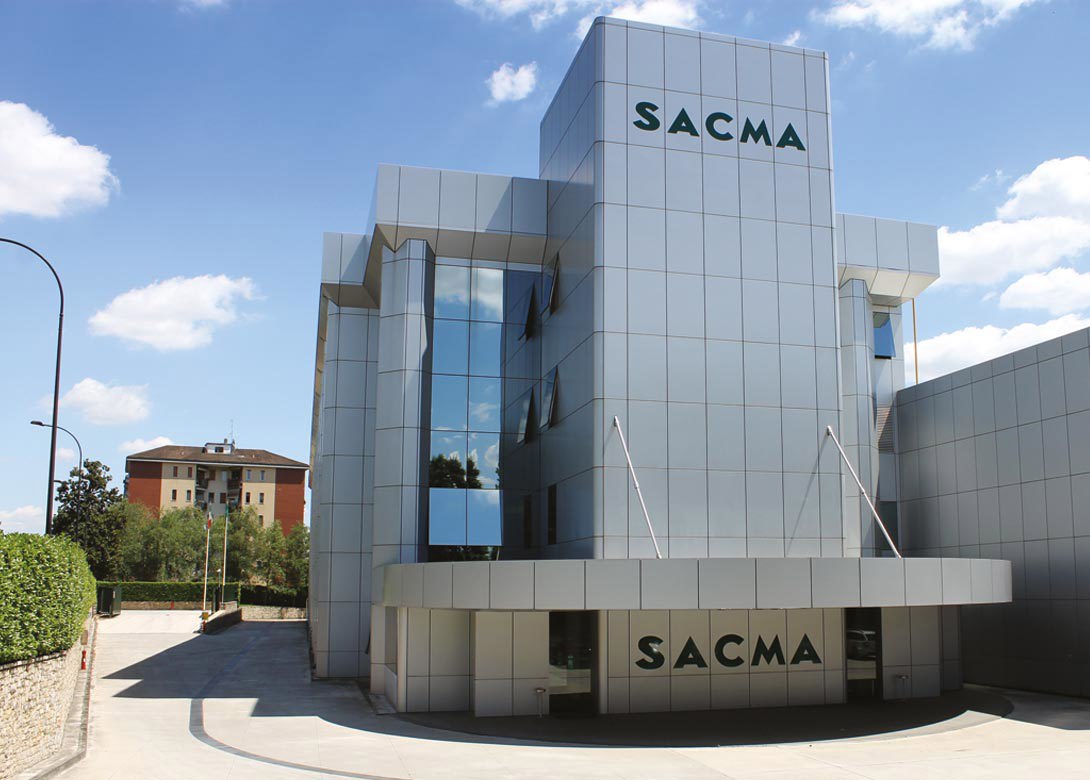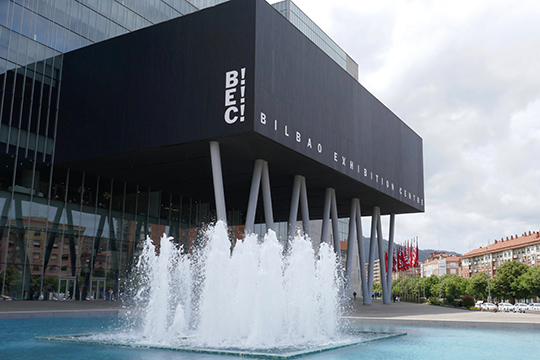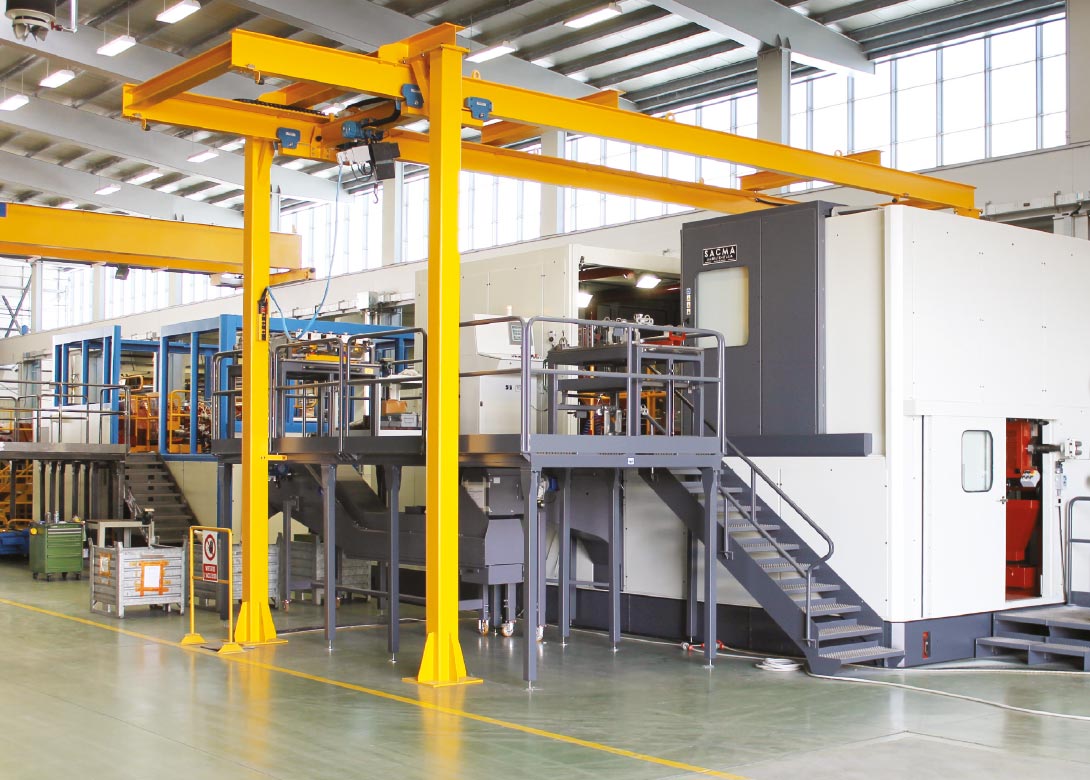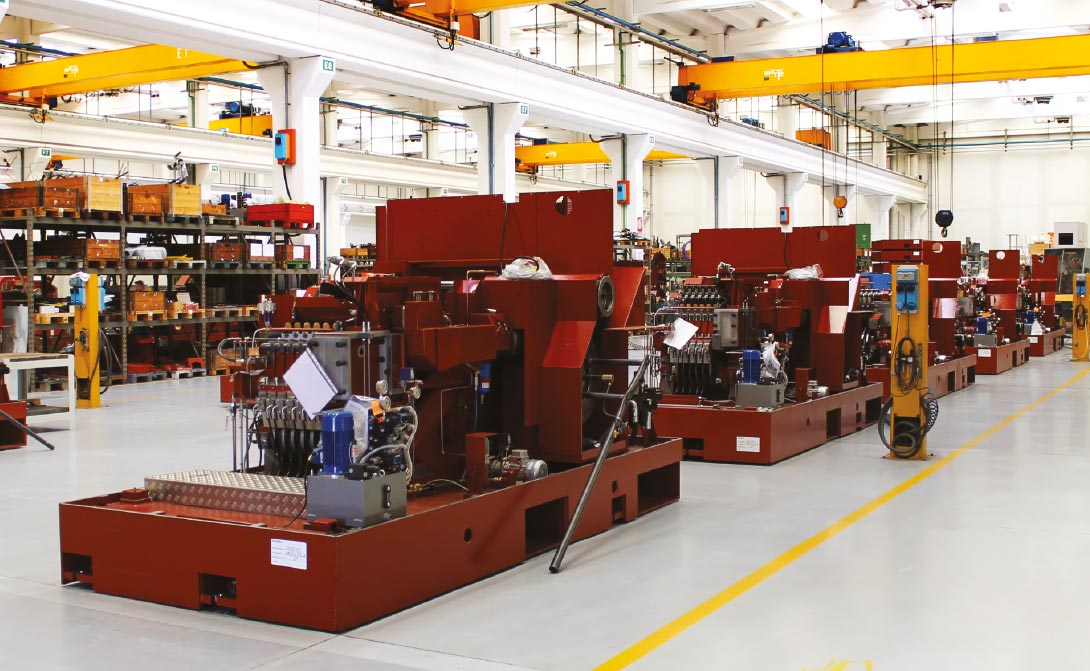
For SACMA Group this has been a summer of looking to the future – which is far from unusual for a company, long committed to occupy the leading edge in fastener manufacturing technology – and looking back, with a mixture of sorrow but also intense pride.
1939 witnessed the foundation of SACMA Limbiate as a small manufacturing business, the brainchild of engineer Valeriano Rampezzotti. It also saw the birth of Mr Rampezzotti’s son,Giancarlo who, having worked closely with his father, took the helm in the 1960s and was largely responsible for the adoption ofnew concepts in production and machine assembly, which drove accelerated growth in SACMA’s fortunes and reputation in the field of fastener manufacturing machinery.


On 17th May 2017 Giancarlo Rampezzotti (pictured) passed away, inevitably causing widespread sorrow amongst his relatives but also the wider family of the SACMA Group. Mixed with that sorrow, however, is an evidently profound pride in the passion that engineered the transition from a small workshop, manufacturing marine outboard engines, to global leadership in cold forming and thread rolling technologies.
During the 1950s, SACMA developed its first machine for manufacturing woodscrews. It also, extraordinarily, designed and manufactured an economical car, eventually purchased by an automotive group abroad. Into the 1960s, SACMA started committing strongly to the production of machines for manufacturing fasteners, and deepened its roots in the city of Limbiate, close to Milan. Today, all the components to build the SACMA machines are manufactured in-house, ensuring total control of the quality of all the parts. There are three different plants, all belonging to SACMA Group – the impressive main cold former plant in Limbiate; the OBM plant at Vimercate, which concentrates on the manufacturing of the smaller parts; and at Castelnuovo Scrivia, where the Ingramatic thread rollers are assembled.
A fascinating tour of the SACMA facility is to immediately comprehend two of the core principles Giancarlo Rampezzotti instilled in SACMA.
First is the direct and complete control of the manufacture and assembly of its machines from the receipt of the core castings throughto final commissioning to fulfil the customers’ exact requirements. The second is the continuous investment in technology and in a skilled workforce, even in the difficult market conditions.
Underlying both is what SACMA Group Commercial Director Enrico Brigatti describes as “an unswerving dedication to manufacturing perfection” – part of the shining example set by Giancarlo Rampezzotti to which, without question, the next generation of SACMA management is wholly committed. President and son to Giancarlo, Valeriano Rampezzotti is succinct on that score: “We already have our investment strategy mapped out for the next five to six years.” Valeriano is based in Limbiate. His sister Nicole Elena is also a member of the board but is based in SACMA Machinery Corporation, in Westlake, Ohio, USA. The chief executive officer for the Group,and also cousin of both, is Mr Valerio K. Mesutoglu.
SACMA essentially builds standard machines, with the final 10 percent of the design and assembly customised to the fastener or parts manufacturers’ requirements. The implications of that philosophy are evident throughout the plant and at all stages of manufacturing. In the rear yard rows of core castings – the resolute heart of all SACMA and Ingramatic machines – are ‘seasoned’ for up to eighteen months. Standardisation means SACMA is able to source, depending on the size of the ultimate machine, between six to fifteen cores at a time from carefully selected forges, providing both quality and cost benefits.
The entire complex machining of the main frames is carried out at Limbiate, on state of the art CNC machining centres. That includes even the smallest machining such as small holes, even though they could be carried out on the shop floor, in order to ensure absolute accuracy and consistency. The largest CNC centre has a 10m long bed and 130 tonne capacity to accommodate the main frames for SACMA’s largest cold formers. Similar, smaller machines surround it but much of the complex machining is carried out on a robotic Mazak machining centre, which never fails to impress visitors. A long cage holds 65 ‘pallets’ each with an operation set up during the day shift, ready for the machining centre to collect, select appropriate tooling from a massive ‘library’, and carry out operations 24 hours a day, seven days a week.An additional new 45-pallet machining centre is currently being built, with commissioning in Japan expected this autumn and installation at Limbiate planned in 2018. That level of investment reflects a SACMA philosophy to replace production machinery every ten to fifteen years rather than tolerate any fall off in accuracy or increase in maintenance costs.
Everything about a SACMA machine is built for longevity – just one obvious indicator is the depth of the bronze surfaces installed onto the main frame. With the exception of electronics sourced from Siemens and ABB, and held in stock to provide immediate availability, SACMA machines all its components. The Group also holds 100% of spares as inventory. Even with SACMA’s levels of standardisation that is a massive stockholding but one that ensures not only highly efficiency production in the plants but also total assurance of support for machines in the field. Not, as Enrico Brigatti is quick to emphasise, that SACMA machines have a habit of failing in use. “Unlike some of our competitors, which derive up to half their revenues from spares and service, these activities only represent 7% for SACMA.” It’s a figure, he acknowledges, that will rise in coming years simply as a function of rapidly growing worldwide population of SACMA and Ingramatic machines, but he still does not expect it to exceed 10%. “That is crucially important,” he says. “It means the machines are running well and continuously. Our customers rarely need the support of a technician from SACMA. Generally, we can diagnose issues remotely, ship spares to the customer and they can have their machine back in production within a few hours of receipt, minimising lost production and time, and keep those parts being formed.

“We are conservative innovators,” he goes onto explain. “We do make innovations but it takes a while. When we do have something ready it is ready for thirty years not ten.” All of which explains not just SACMA’s continuous programme of investment in production technology but also in research and development. “In R&D we don’t just design the machine, we design each individual part, creating drawings and manufacturing methodology.” A secure document storage system next to the design office stores drawings for every SACMA part ever produced. For additional security, duplicates are held at the family home and in a separate off-site facility. On the production floor, however, SACMA has adopted Industry 4.0 principles and there are no drawings to be seen –instead there are carefully positioned, large-screen terminals, via which engineers can access all of the drawings and specifications they require.
With sub-assembly completed the machine modules are brought together on a series of final assembly lines, each dedicated to a different size machine and on each of which a number of machines are nearing completion. For example, on the largest scale assembly line this summer, SACMA had four Size 6 machines – two 31mm and two 33mm diameter capacity. Across all the assembly lines the final destinations of the machine underscore SACMA’s global market – with machines destined for European, Asian, North and South American customers.

The whole manufacturing facility, as well as the offices, is remarkably clinical – redolent of Formula One racing car assemblies but on a massive scale. Enrico Brigatti smiles at the thought: “We sell high technology machinery. When our customers come to Limbiate we want them to recognise that is not a superficial commitment but runs throughout our operations. In the same way we invest in really attractive stands at worldwide fastener exhibitions. The machine we present is a thing of beauty – it is like seeing a Ferrari car. So people want to work on these machines, it attracts the young people and helps to convince them that fastener manufacturing is a modern, critical manufacturing process.” Nowhere, says Enrico, is SACMA’s distinction in this regard proving more persuasive than in Asia. “There really is a strong appreciation of the sophistication of our technology. SACMA machines are desired not just for the manufacturing efficiency and reliability but also as a visible sign to the factory’s customers that they are committed to the highest global standards. Once the customer installs one SACMA machine, maybe even with its ‘marketing’ benefit more in mind, they rapidly realise the efficiency, accuracy and productivity advantages that justify the significantly higher cost compared with locally produced machines.”
Today SACMA Group has global annual sales in excess of €60 million, and employs more than 210 people. Nearly 80% of its output is exported, across the globe, with the emphasis on five and six die progressive formers to meet the ever increasing demand for complex, net shape parts; and bolt makers primarily for high volume accurate production of automotive parts.
Quite some legacy from just two previous generations of entrepreneurial leadership but the appetite to continue to build on it is evident.No question, there is much more to come inSACMA Winning Technologies®.
www.sacmagroup.com

Will joined Fastener + Fixing Magazine in 2007 and over the last 15 years has experienced every facet of the fastener sector - interviewing key figures within the industry and visiting leading companies and exhibitions around the globe.
Will manages the content strategy across all platforms and is the guardian for the high editorial standards that the Magazine is renowned.
Don't have an account? Sign Up
Signing up to Fastener + Fixing Magazine enables you to manage your account details.